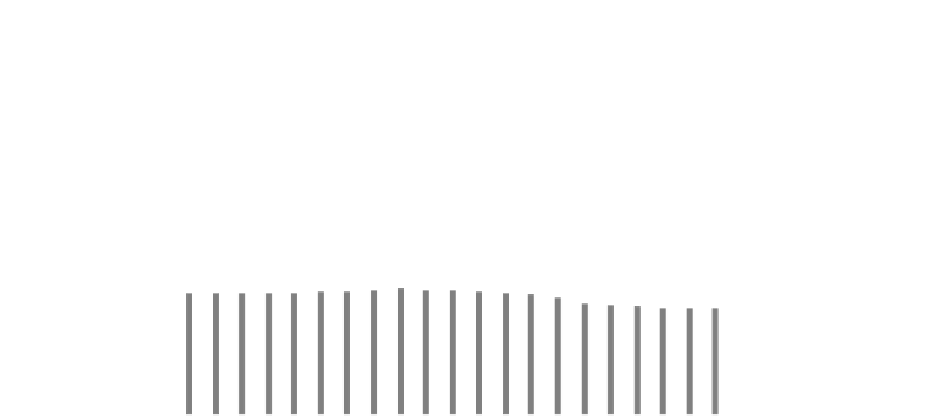Agriculture Reference
In-Depth Information
Figure 2. Changes in the WRCs of agricultural land with change in arable land area
Paddy
Non-paddy
Total
WRC
3000
3,300
2500
3,100
2000
1500
2,900
1000
2,700
500
0
2,500
1980
1985
1990
1995
2000
Year
4. Water balance in paddy field
The water use indicator in the OECD report,
Environmental Indicators for
Agriculture, Volume 3
did not describe fully all of the actual status of water drainage &
efflux in agricultural land, especially in paddy fields. In particular, the indicator did not
represent fundamental characteristics of water use in paddy fields in Korea, which
belongs to the monsoon climate zone. The paddy field has a large water holding capacity.
Water coming from intensive rainfall in summer can be captured by the paddy field and
then be stored through a drainage into streams or underground water reservoirs. In
addition, the water derived from intensive rainfall in summer in Korea amounts to
approximately 2/3 of the total amount of the annual precipitation. Thus, considering the
contribution of paddy fields to water holding capacity, agricultural water use
characteristics of an area or a country should be reflected in order to create an indicator
for genuine agricultural water use, because it has a different agricultural water use system
even in countries having only non-paddy land. Water supplied into paddy fields by
precipitation or irrigation can be used again, both by forming ground water through
drainage of holding water by infiltration and/or by the efflux of a considerable amount of
surface water to rivers or reservoirs. That is, about half of agricultural water supplied into
paddy fields can be used again as household water, industrial water, or in-stream water.
Therefore, it is more reasonable to consider characteristics of a water resource and its
behavior in a given area including precipitation, irrigation & return flow, farming
systems, etc. when we develop an environmental indicator for agricultural water use.
Oh et al. (1998) reported that runoff water in paddy fields was 10%, infiltrated water
was 48%, and water consumed by evaporation was 40%, respectively (Figure 3). Eom et
al (2000) reported that 55% of infiltration water flowed into rivers again by drainage and
45% was stored as ground water. If we calculate the amount of water stored in paddy
fields or to be able to be reused at this rate, this will be equal to 1.5 times the amount of
water to be kept in
Soyang
Dam, which can store 1.9 billion ton year
-1
.



























Search WWH ::

Custom Search